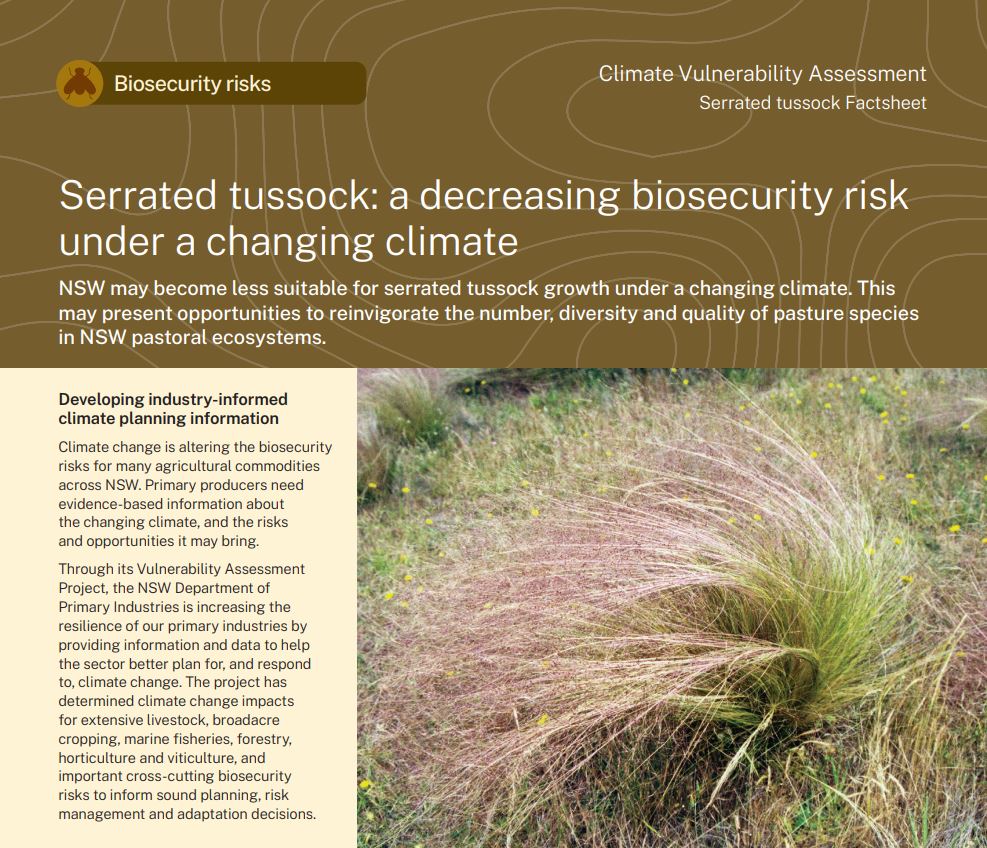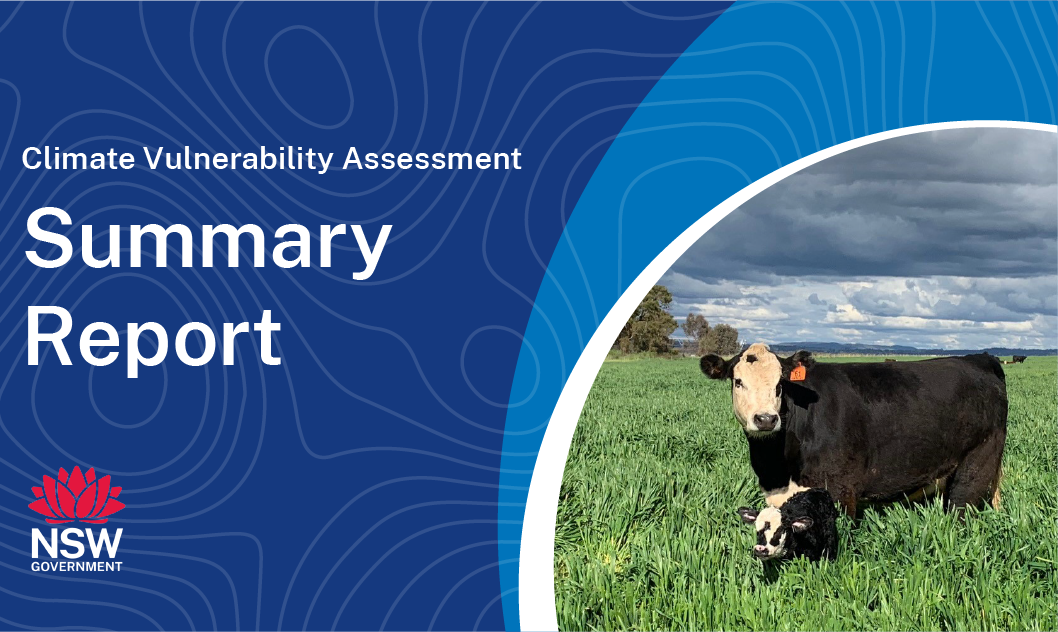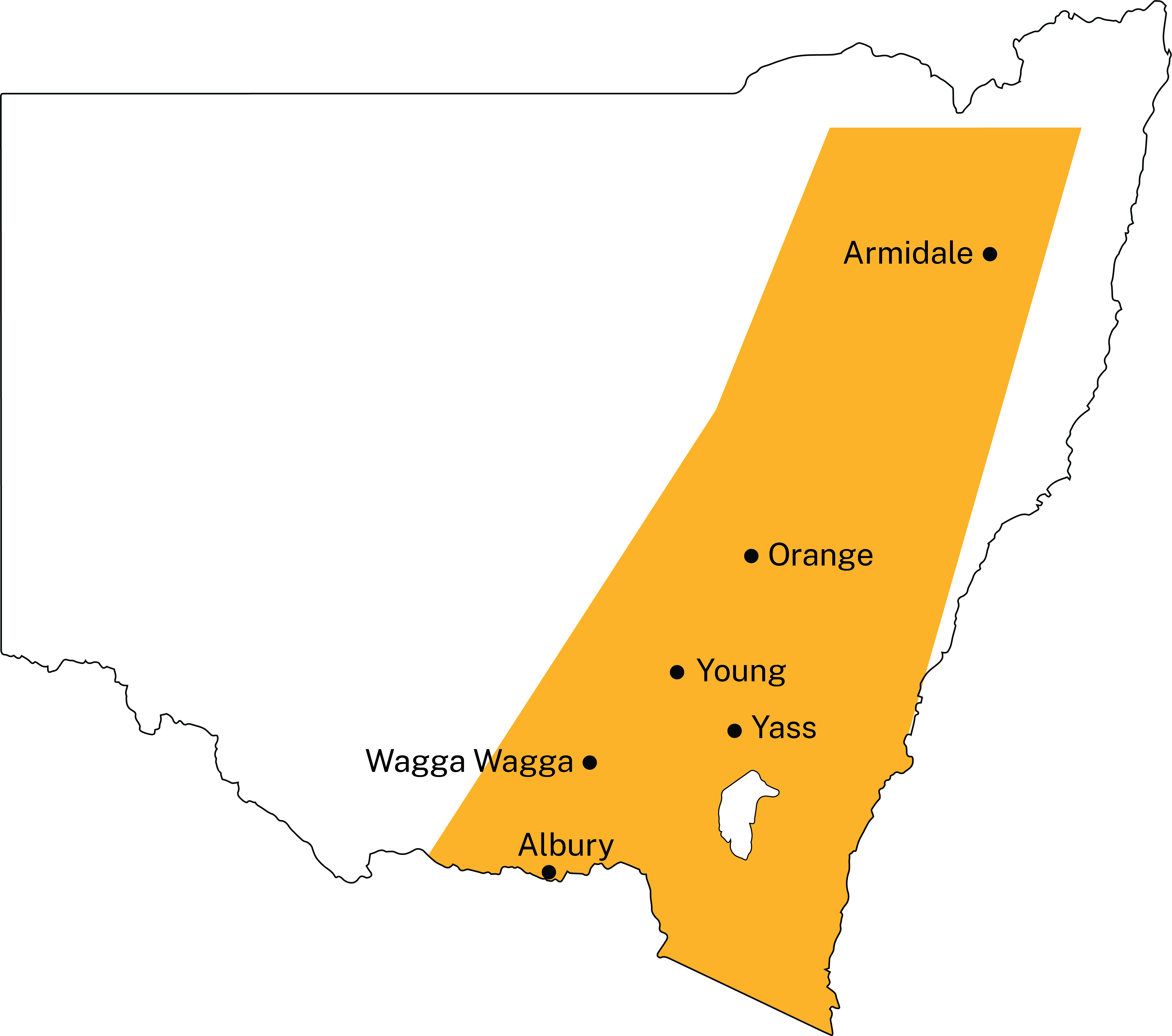What is the NSW DPIRD Climate Vulnerability Assessment? ⏷
Climate change is altering the biosecurity risks for many agricultural commodities across NSW. Primary producers need evidence-based information about the changing climate, and the risks and opportunities it may bring.
The NSW DPIRD Climate Vulnerability Assessments are enhancing the resilience of our primary industries by providing information and data to help the sector better plan for, and respond to, climate change. They have assessed climate change impacts for extensive livestock, broadacre and irrigated cropping, marine fisheries, forestry, horticulture and viticulture, and important biosecurity risks associated with these industries to inform sound planning, risk management and adaptation decisions.
How we assessed climate suitability ⏷
Climate projections were sourced from Climate Change in Australia’s ‘Application Ready Data’. This dataset is comprised of projections from an ensemble of 8 global climate models, each presenting a plausible future climate. Low confidence in the projected changes due to differences between the models is noted in the text. Care should be taken when interpreting these results.
The Climate Vulnerability Assessment is intended to highlight potential industry- or regional-level changes. Intermediate and high emissions scenarios were used in the assessments (RCP4.5 and RCP8.5), but these are not the only future scenarios possible. The inclusion of climate variables important to the commodities production was based on published research, expert knowledge and data quality and availability.
Climate suitability was assessed on a seasonal timescale, with the reported climate suitability representing the average for a given season over all years in the dataset. This reflects the pattern of life stages for serrated tussock and the need to determine which months are likely to pose the greatest risk to grazing systems.
Learn more in the Climate Vulnerability Assessment Project Framework.
Climate impacts: expected challenges for primary industries
Changes in climate suitability are likely across all key life stages of serrated tussock by 2050, under both emission scenarios.
Changes to overall seasonal climate suitability affect serrated tussock in NSW in different ways:
- Summer, autumn and spring – there are likely to be minimal to moderate decreases in climate suitability in serrated tussock-affected region. The decrease is likely to be greatest under the high emissions scenario (low to high confidence).
- Winter – there are likely to be minimal increases in climate suitability in the south of the serrated tussock-affected region. The increase is likely to be greatest under the high emissions scenario (low to high confidence).
- Winter – there are likely to be minimal decreases in climate suitability in the north of the serrated tussock-affected region. The decrease is likely to be greatest under the high emissions scenario (low to high confidence).
The effects of serrated tussock on pastures and dependent industries will depend on the future distribution of those industries, as they adjust to the changing climate.
The expected decrease in climate suitability for serrated tussock seedlings in summer by 2050 is a key determinant for weed survival. It is likely to lead to fewer infestations and a potential reduction in management/eradication effort. This may help to reinvigorate the number, diversity and quality of pasture species.
Current strategies to manage the weed are likely to remain effective, and increased focus on containment and eradication, with accompanying investment, could help to prevent further spread and ensure that serrated tussock does not become established in threatened or protected ecosystems in NSW, such as the Kosciuszko National Park.
Where can I find the climate suitability maps?
Maps of historical and future climate suitability for commodities were produced to demonstrate where in the state a commodity is likely to thrive or else be limited by future climatic conditions. The maps are not provided on these webpages but can be found in the Climate Vulnerability Assessment Summary Report (PDF, 41425.92 KB).
Serrated tussock Factsheet
(PDF, 489.67 KB)

Summary Report
(PDF, 41425.92 KB)

